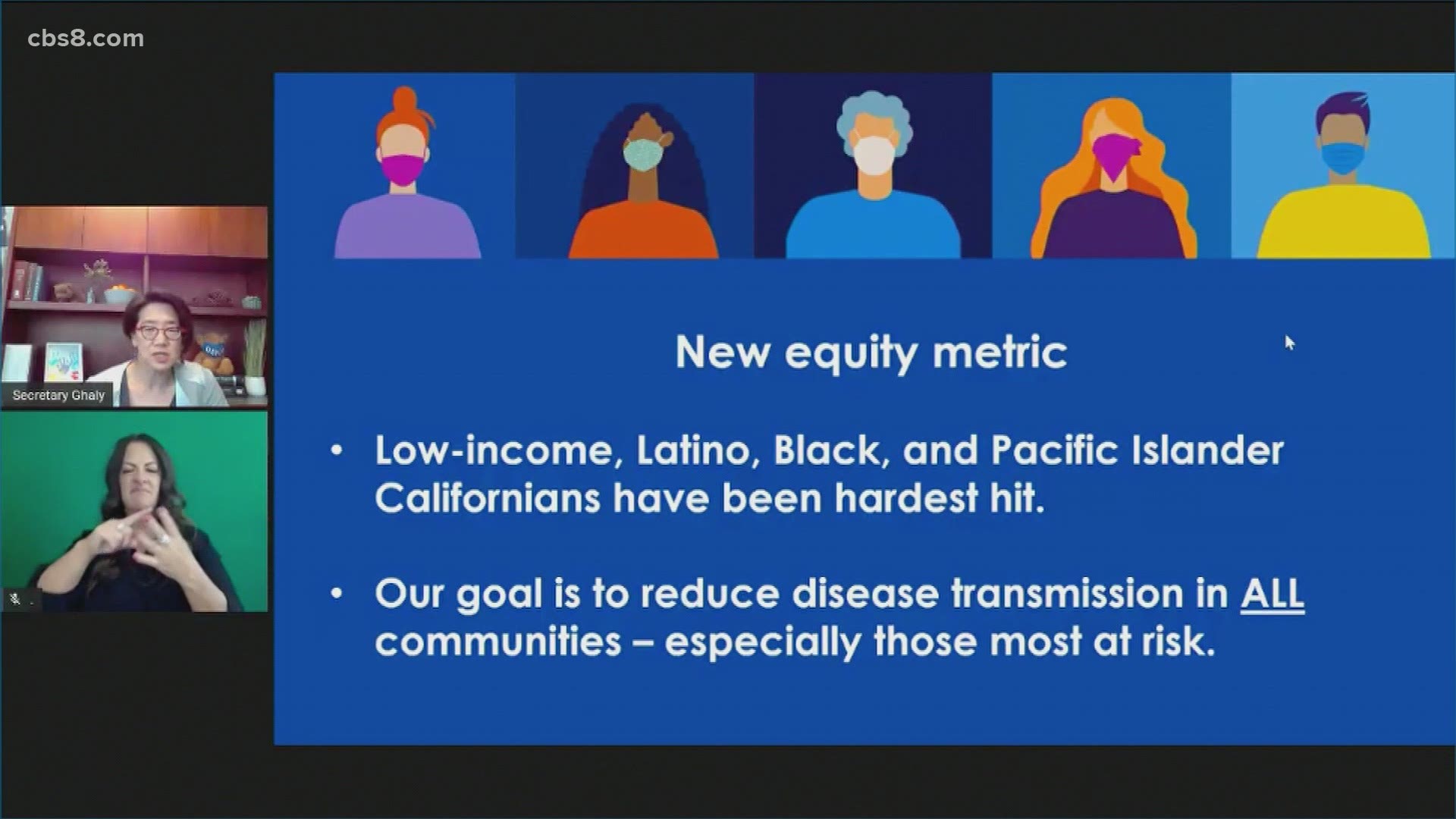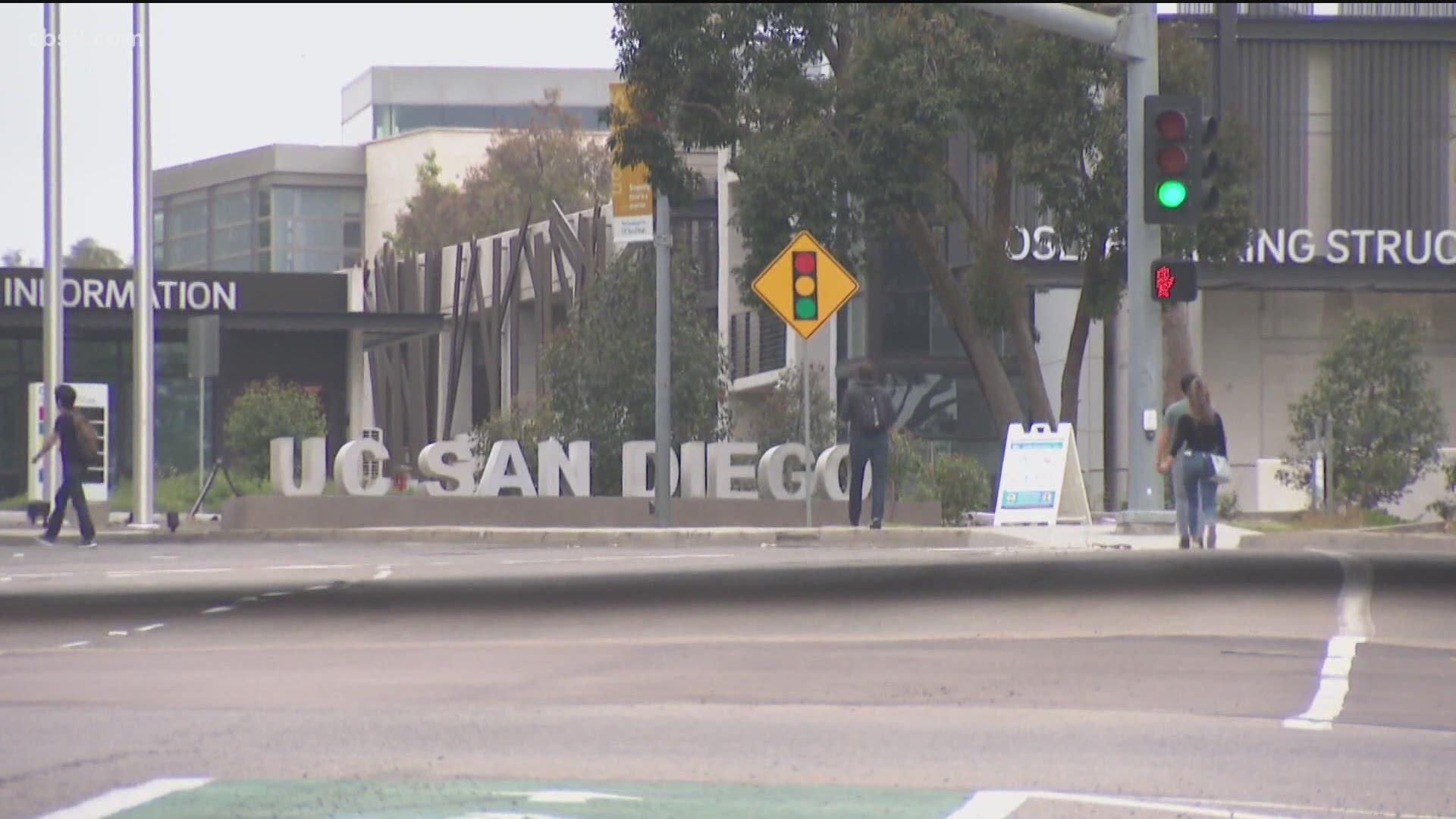SAN DIEGO COUNTY, Calif. — Researchers around the world are still working toward a vaccine for coronavirus. Now, UC San Diego will be a test site for the third phase of a clinical trial to find that vaccine. The trial starts at a pivotal time as the state is now launching a health equity metric to measure positivity rates in disadvantaged communities.
Along with the case rate and testing positivity numbers we have all grown used to in California, for the first time, the state issued a new health equity metric Tuesday.
The first-in-the-nation approach is designed to focus on the disproportionate impact that coronavirus is having on the county's most disadvantaged communities.
This new metric looks to focus on the disparities COVID-19 is having on communities of color, motivating counties to invest more resources in those specific communities to reduce the rates of transmission and be able to move more quickly into a less restrictive color tier.
"Across the board nationally, we know that COVID-19 is ravaging low-income minority communities," said Mauricio Torre, vice-president of programs and operations for South Bay Community Services based in Chula Vista, part of the San Diego Latino Health Coalition.
Statewide, for example, Latinos make up 40% of the overall population but account for 61% of all of California's coronavirus cases, as well as almost 50% of all deaths from COVID-19.
"Our goal is to reduce disease transmission in all communities, especially those most at risk," explained Dr. Erica Pan, the state's acting Public Health Officer.
To achieve that, the state has launched the first-ever "health equity metric" which measures the COVID testing positivity rate in a county's most disadvantaged neighborhoods.
"In some ways, there is something in this that could slow down a county from moving forward," said Dr. Mark Ghaly, California's Health Secretary.
Using California's Healthy Places Index, which breaks down by census tract a community's average income level, educational attainment, access to health care care, and other factors, the state looks at the testing positivity rate for the 25% of census tracts in a county that score the lowest.
In San Diego's case, the health equity metric this week was 6.2% - far higher than the county's overall testing positivity rate of 3.5 percent.
For San Diego County to move to the less restrictive orange tier, the positivity rates for both now must fall below 5% for two consecutive weeks, while the case rate per 100,000 - now at an adjusted rate of 6.5 - must fall below 4.
"These families were already struggling," Torre said. "Now with this pandemic, it only exacerbates the struggles these families are going through.:
Torre said this new metric highlights the need to provide more education about coronavirus, as well as more opportunities for testing and contact tracing.
"Really what we are doing is making sure that these resources get to low-income communities," Torre added.
The goal of both the states equity metric and UCSD’s clinical trial is to slow and eventually stop the spread of COVID-19 and provide resources to communities that have been historically underserved during times like this.
The vaccine trial coordinators are working with National City to establish a testing location. The more long term goal of the trial is to eventually provide 300 million doses of a vaccine by the end of this year or early next year.
For more information about participating in the vaccine trial at UC San Diego, click here.


